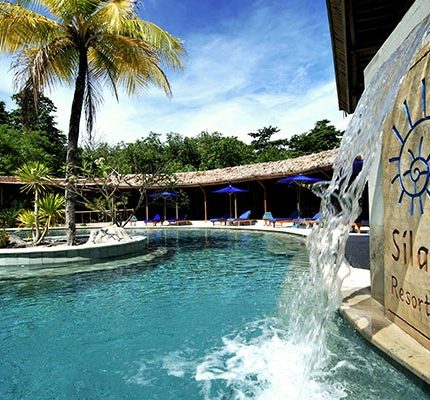Whale and Dolphin Watching
Eco-Friendly Travel
Watching whales or dolphins is often an awe-inspiring and unforgettable experience. Whale and dolphin watching trips should be calm, controlled, and guided by a deep concern for the animals’ well-being and safety.
GENERAL DO’S AND DON’T’S:
- Always allow the animal(s) to control the nature and duration of the encounter.
- Never pursue or harass whales or dolphins.
- If they appear agitated or disturbed, leave the area.
- Keep a good look out at all times to avoid collisions or inadvertent harassment.
- Be especially careful around mothers and calves—keep at a distance and never separate them. Keep all noise to a minimum.
- Experts advise not to touch or feed whales or dolphins.
- Trash can kill, so remove all litter.
- Do not buy whale products—they are strictly protected under CITES (Convention on International Trade in Endangered Species of Wild Fauna and Flora).
SIGNS OF AGITATION IN WHALES AND DOLPHINS:
- Rapid changes in direction or speed.
- Erratic behavior.
- Escape tactics such as prolonged diving.
- Tail slapping or tail swishing.
SWIMMING WITH WHALES AND DOLPHINS:
Whale and dolphin behavior is not thoroughly understood. Experts advise that it is best to observe and appreciate the animals without entering the water to protect yourself and the animals.Participating in whale watching programs helps to protect whales by raising awareness about them and providing income to local people. Be sure to find out about local laws and regulations as they may differ from these general guidelines. VIEWING GUIDELINES Never chase or herd whales or dolphins. Operate your boat in a predictable manner.
For example:
- Keep to a no-wake speed and never try to overtake whales or dolphins.
- Avoid sudden changes in speed, direction or noise level.
- Do not encircle, chase or separate animals and always leave an escape route.
- Never approach whales or dolphins head-on, and stay out of their path so they are not forced to change course.
- Do not engage in “leapfrogging” or jumping ahead of a whale’s path to force an encounter.
IN THE “VIEWING ZONE”:
- Stay at least 100 meters (110 yards) away.
- Stay at or below a no-wake speed.
- Coordinate approaches into the viewing zone with other vessels to avoid “trapping” whales or dolphins.
- Limit viewing time to around 30 minutes per vessel.
- Limit the number of vessels in the viewing zone to one or two at a time.
- Stay on a course parallel to that of the whales or dolphins.
WHEN WHALES OR DOLPHINS APPROACH:
If whales or dolphins approach, maintain your course and continue dead slow or stop, leaving the engines to run in neutral.
DOLPHINS AND BOW RIDING:
Do not drive through groups of dolphins to encourage them to ride the bow wave—not all dolphins will want to bow-ride and many will find it stressful. If dolphins approach to ride the bow wave, maintain course and speed or slowly stop and let them pass.
CAUTION—LET WHALES OR DOLPHINS KNOW WHERE YOU ARE. Always keep the boat engine running even when drifting. This is for your safety as well as the animals’. Whales have been known to collide with boats under sail.
© CORAL.





Reviews
There are no reviews yet.